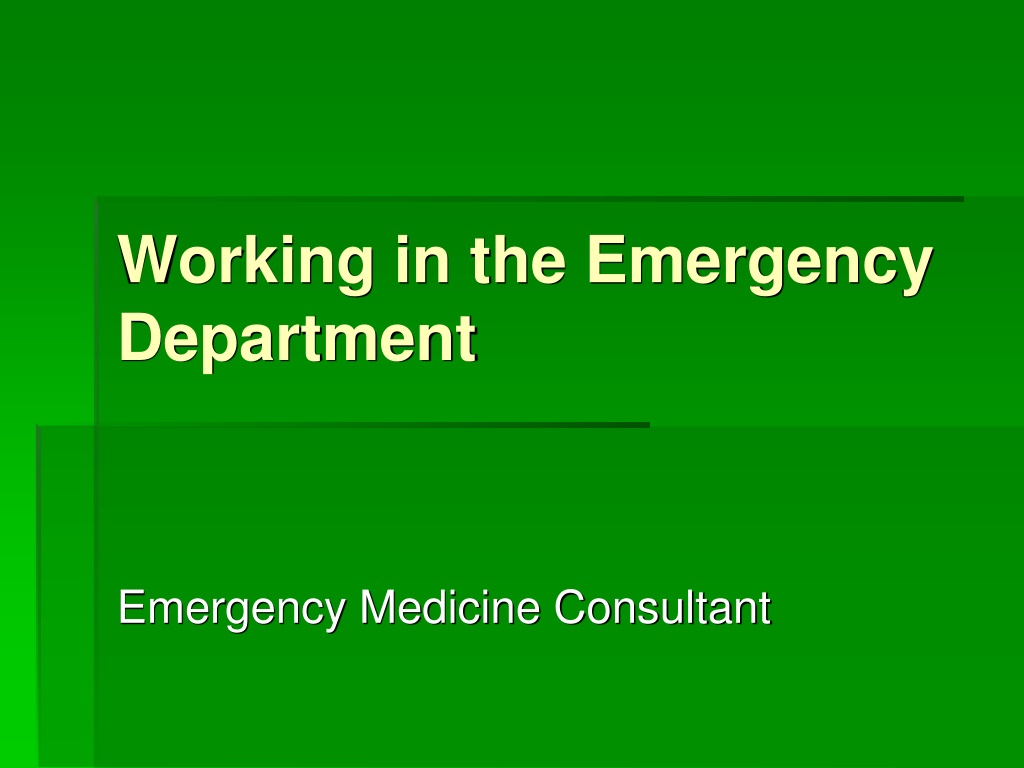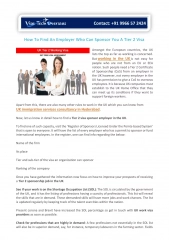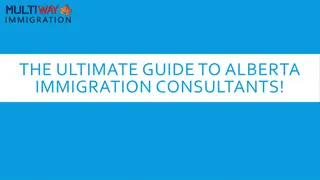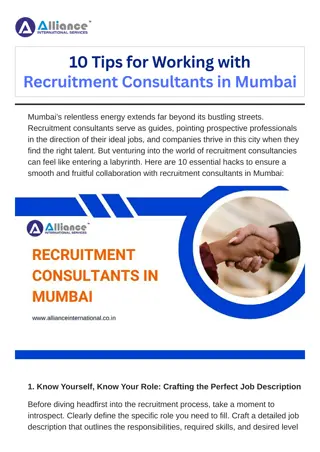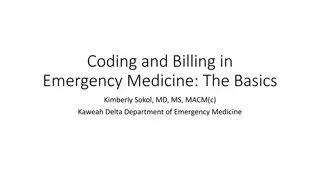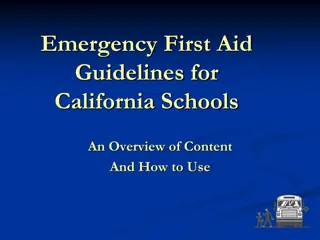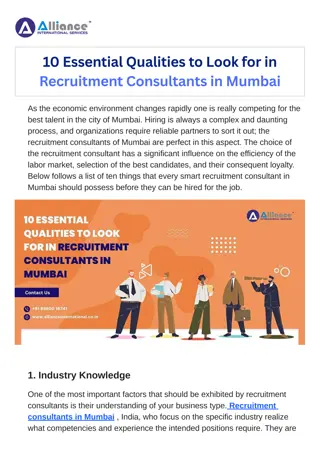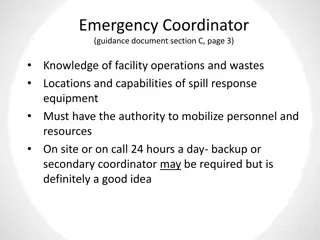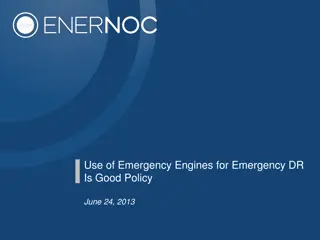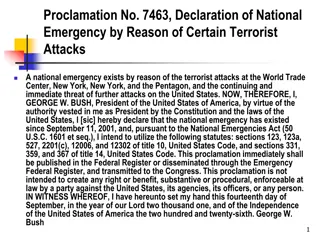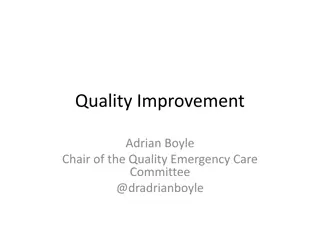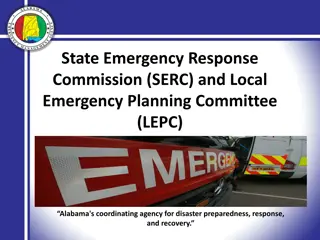Essential Guidelines for Emergency Medicine Consultants
This detailed content provides a comprehensive overview of working in the emergency department as an Emergency Medicine Consultant. It covers aspects such as the medical staff structure, team collaboration, shift rotations, teaching opportunities, regulatory compliance, patient safety tips, and more. Valuable information on managing patient care, team dynamics, and safety protocols is incorporated throughout the content.
Download Presentation

Please find below an Image/Link to download the presentation.
The content on the website is provided AS IS for your information and personal use only. It may not be sold, licensed, or shared on other websites without obtaining consent from the author. Download presentation by click this link. If you encounter any issues during the download, it is possible that the publisher has removed the file from their server.
E N D
Presentation Transcript
Working in the Emergency Department Emergency Medicine Consultant
Medical Staff 8 consultants 6 staff grades Trainees EM trainees GP trainees F2
Team working Sister in charge of the department Nursing staff Health care assistants Clerical staff Physiotherapy/Occupational therapy/Social Worker Pharmacist Inpatient Teams
Rota Shifts Day Evening Night Daily allocation sheet Senior cover 24/7 except weekend nights (6am to 8am) Rolling rota Swaps must be agreed by all parties, inform Gillian Armstrong (ED secretary) Leave fixed unless exceptional circumstances Sick leave prospective cover, inform Gillian and consultant in charge ASAP DO NOT CALL REG PHONE
Teaching Friday morning Attendance as per rota and at your discretion Usual pattern small group teaching/practical skills/ sim Shop floor teaching Mentors Clinical supervisor
Working in the ED Handbook CEM guidelines GMC - Good medical practice Arrive promptly for shift Try to ensure patient management is complete before end of shift or give clear handover instructions to colleague (document in notes) Uniform policy Handwashing / infection control policies Take your breaks (not all together!)
CEM Top 10 Tips for keeping patients safe 1. If you see something unsafe - or potentially unsafe do something about it NOW 2. If it doesn t feel right get help 3. If you don t know how or what to do ASK 4. Prior to any procedure or the administration of drugs, check: right patient, right dose, no allergies and name band in place 5. Believe the patient/relative
CEM Top 10 Tips for keeping patients safe 6. Take particular care with high risk patients 7. Review all relevant and available information on the patient (e.g. ambulance patient report form, previous notes) 8. Review the results of any investigations that have been ordered before the patient is discharged 9. Listen to the patient and encourage them to participate in their safety 10. Use a structured approach to communication, such as SBAR (Situation, Background, Assessment, Recommendation)
Admission Admission rights to medicine and surgery Bleep relevant SHO to handover patient Document name and time in notes Discuss all admissions with the senior doctor on the floor and ensure signoff complete on Symphony Commence emergency treatment and arrange emergency investigation.
Admission criteria (see Handbook) Unstable angina or new ECG changes Requirement for IV treatment not available in the community Haemodynamically unstable Likely to require theatre within 18 hours Require monitoring for more than 4 hours Acute inability to move a limb within 48 hours of presentation Will require new artificial ventilation or supplemental oxygen Severe electrolyte / acid-base abnormality Acute impairment of sight or hearing within 48 hours of presentation Recent acute internal bleeding Acute confusional state / coma / unresponsiveness Acute rupture of recent surgical wound Consultant protocol override
Short Stay Ward Inpatient vs ambulatory Single goal Move towards care pathways for specific conditions Maximum 24 hour stay Examples: minor head injury, self harm, investigation of renal colic, low risk chest pain, VTE, tonsillitis Follow up results of investigations in ambulatory care
Discharge Not all patients who present to the ED require admission GP review Hospital diversion team Ambulatory care / ED review clinic Discharge with advice TCASOS (document the discharge advice) Good practice to discuss with senior in charge to ensure safe discharge Concise GP discharge letter on Symphony
